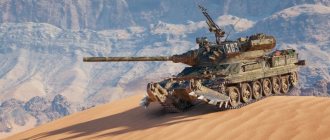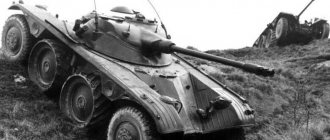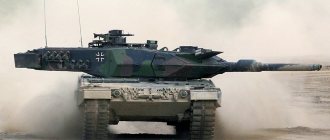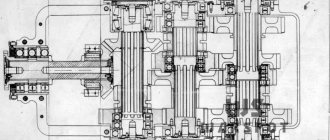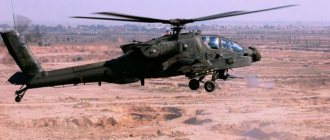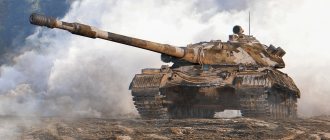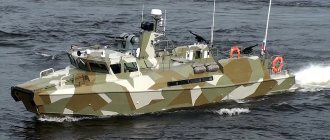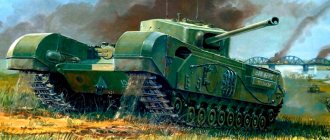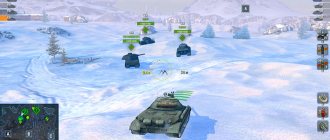Updated: May 4, 2022 at 11:36 am Collections
Begin to play
Until recently, the German RU 251 was considered the fastest tank in WOT. With the advent of wheeled vehicles in the World of Tanks, the situation has changed. Now France confidently holds the leadership in speed.
Many of the vehicles included in this selection are well known to every World of Tanks tanker. These are light tanks, which are called “fireflies” in slang. They have thin, almost cardboard armor, a weak weapon, but very high speed and maneuverability. It is worth mentioning that competently playing your role on a firefly is not as easy as it might seem from the outside, and it is not speed that decides, but the right tactics.
The current TOP of the fastest tanks in World of Tanks was created especially for our readers, and it will be updated periodically.
PANHARD EBR 105, France
This “evil on wheels” appeared in the game relatively recently, but has already managed to make a splash in high-level randomness. PANHARD EBR 105, a French Tier 10 light wheeled tank capable of speeds of up to 95 km/h . Experienced players claim that in practice the speed can be increased to 105 km/h. PANHARD EBR 105 is the fastest tank in World of Tanks today.
Characteristics of PANHARD EBR 105
Military purpose
It is noteworthy that the tank model, a copy of which West acquired, was originally developed for military purposes. But a special order of pseudo-military equipment imitating a Ripsaw tank was carried out for the rapper. Another thing is that the original manufacturer was involved in the sales.
Ripsaw EV2 was created by Howe and Howe Technologies, which was later acquired by defense and aerospace manufacturer Textron Systems. Ultimately, the tank became available to wealthy individuals. When launched on the market, the model was positioned as fast, high-performance and even luxurious.
PANHARD AML LYNX 6X6, France
Third place in our ranking of the fastest WOT tanks again goes to France. The PANHARD AML LYNX 6X6 is a Tier 8 light wheeled tank that is researched before the PANHARD EBR 90 discussed above. Unlike its high-level counterparts, this baby has even more modest dimensions and confidently maintains speeds of up to 80 km/h . Quite enough to quickly reconnoiter the situation on the battlefield.
Characteristics of PANHARD AML LYNX 6X6
AMX ELC
Although the Yolka will hardly ever be able to boast of its former power, it still remains a very strong tank due to its incredible camouflage and visibility.
This little thing is capable of outshining even level 7 tanks, let alone opponents of the same level. There are often situations when you cannot be seen even from 200 meters.
Despite the impressive viewing characteristics, the Christmas tree has real problems with firepower. Both the 75 mm and the 90 mm gun are both very weak, without normal stabilization or penetration, they take an awfully long time to converge and at least half of your shots will hit the ground.
Ambiguous in terms of firepower, but excellent in terms of light coverage, this machine is capable of giving a lot of fun and dragging out a battle in a very difficult situation due to its extremely stupid camouflage.
RHEINMETALL PANZERWAGEN, Germany
Among all the World of Tanks tracked vehicles, the RHEINMETALL PANZERWAGEN is considered the fastest - its speed reaches 75 km/h . This is a tier 10 light tank, which, like all “tens”, is available for purchase for 6.1 million credits.
Characteristics of RHEINMETALL PANZERWAGEN
Investments in transport
Not long ago, Forbes magazine included Kanye West in the circle of billionaires, estimating his fortune at $1 billion. In the same article about the famous rapper and owner of his own fashion line, it was emphasized that he spent about $3.8 million on transport. Obviously, in most cases these are unusual cars, but more often we are talking about luxury models.
In this case, attention was given to the real tracked Ripsaw EV2, for which the singer had to pay 500 thousand dollars.
T-100 LT, USSR
The leadership among WOT tracked vehicles is shared with Germany by the USSR. The T-100 LT is a tier 10 light tank that completes the LT branch of the Soviet Union. Its engine allows you to increase the speed to 72 km/h . In addition, this “scoop” has a good turning speed of 56 degrees/sec.
Characteristics of T-100 LT
CHAPTER 1. TANK SPEED
CHAPTER 1.
TANK SPEED
A conversation between an Englishman, the owner of the house, and a car driver who drove into his kitchen through a hole in the wall:
Owner: “Where were you going?”
Driver: “Actually, I was driving to Liverpool, but I didn’t fit into the turn.”
Owner: “Next time, go through the bedroom, the path is shorter there.”
(Joke)
There should be a sense of proportion in everything. When assigning a high maximum speed to promising models of armored vehicles, it is necessary to have a clear understanding of the existence of a number of obstacles, the overcoming of which is associated with intractable technical problems (for example, the reliability of the chassis) and, most importantly, with dangerous phenomena related to the so-called human factor.
The ironic anecdote preceding this chapter and the photographs indicate the authors’ desire to draw the attention of tank builders and military specialists to the existence of problems associated with the development of high speeds in tank building. Ignoring these issues may direct the development of tank building down the wrong path, which will negatively affect the timing of the delivery of modern armored vehicles to the troops and impose additional burdens on the country’s military budget. The history of tank building in the USSR has such examples.
The favorite of the Marshals of the Soviet Union - the BT-5 tank in a jump
In the 30s of the last century, the most popular tanks in our country were the T-26 light tanks and wheeled-tracked BTs. The latter formed the basis of our mechanized and tank formations. Medium T-28 and heavy T-35 tanks were produced in limited quantities. All tanks had bulletproof armor. Possessing high power density, BT tanks had no equal in the world in terms of maneuverability. This can be seen from the table presented.
Mobility characteristics of high-speed BT tanks [8],[9].
BT were very loved by tank crews and the country's highest military leadership: Marshals of the Soviet Union M.N. Tukhachevsky and K.E. Voroshilov. At that time, the troops began to hold competitions for the most jumping tank. BT tanks looked great during the exercises, developing high speeds and performing demonstration jumps from a springboard of 20 meters or more [9,10]. But the weak armor protected the tank only from bullets and light shrapnel, and the low-power gun was powerless in competition with enemy tank weapons. BT-5 tanks took part in the Spanish Civil War on the side of the Republican Army in 1936-1939. From 50 BT-5 tanks and volunteer tankers of the Red Army in Spain, a separate International Tank Regiment of the Republican Army was formed. During the battles near Fuentes de Ebro and during the assault on the city of Teruel at the end of 1937, 31 tanks were knocked out of action by the fire of small-caliber anti-tank artillery of 37 and 50 mm caliber. In March 1938, volunteers and military advisers were recalled to their homeland, and the International Tank Regiment of the Republican Army was disbanded [9]. Thus, the fastest tanks in the world, with power-to-weight ratios higher than those of all modern tanks, including the T-80U, could not withstand small-caliber anti-tank artillery even in 1937. At the same time, the tank crews were composed of the best tank crews of the Red Army.
A generalization of the experience of combat operations of light tanks of the Red Army in Spain, as well as the experience of operating tanks in military formations showed the following:
— BT tanks met the mobility requirements, but were overloaded; the unresolved problem was the low reliability of the chassis;
- a problem of spare parts arose, aggravated by the presence of two different types of tanks in the same class of armored vehicles - T-26 and BT.
It became clear that the armament of the Red Army required a new, single, reliable tank for combined arms use. The legendary T-34, created by a team of designers under the leadership of the outstanding chief designer M.I., became such a tank. Koshkina. He was able to prove to the hesitant and indecisive military leadership that the emphasis on high operational speed at the expense of armor and armament, adopted in 1933-1934, was outdated, and a promising tank should only have a tracked undercarriage with an optimal maximum speed of 54 km/h. But the question of choosing a single new tank dragged on until 1940. All this time, the production of obsolete tanks like the T-26 and BT continued, with which the Red Army entered into battle with German tanks manned by highly trained crews.
The excellent T-34 tank, adopted by the Red Army before the start of the war, was not put into serial production and had insufficient reliability. New tanks that entered service required new types of fuel for their operation (for T-34 and KV-1 tanks - diesel fuel, for all others - gasoline) and ammunition due to the installation of guns of increased power. The supply of troops with these consumables was not established. The lack of the required amount of diesel fuel and practical shells prevented the conduct of planned combat exercises to coordinate tank platoons and companies. “Under those conditions, only a miracle could have prevented the disaster of the summer of 1941” [8]. Miracles only happen in fairy tales.
By December 1, 1941, in four months of war, we had lost 20 thousand tanks out of 23 thousand available at the beginning of the Great Patriotic War - according to the Institute of Military History, referred to by Yu.P. Kostenko [11].
But all this happened later, and in May 1940, Marshal of the Soviet Union Kliment Efremovich Voroshilov was removed from the post of People's Commissar of Defense of the USSR with the wording:
“For the lag in the development of operational management issues and lack of understanding of the principles of the use of tanks, aircraft, and landing forces” [12].
Have we learned any useful lessons from this historical period of domestic tank building? It turns out not! Once again, our troops have tanks of different brands, fuels and lubricants and spare parts; All media talk about the jumping ability of tanks more than about the power of weapons and security. The reliability of the chassis of the T-80U tank is also weak, and the top military leadership is also hesitant in equipping the Ground Forces with a single T-90 tank, adopting new modifications of gas turbine tanks of the T-80 type. There were calls from the creators of the T-80 to achieve tank speeds of 100 km/h, supported by individual leaders of the GABTU of the Ministry of Defense. The published dreams of one of the creators of the T-80 tank [13] see the achievement of the following indicators in a 21st century tank:
“Specific power of the power plant is 50-30 hp/t, average speed is 70-75 km/h, maximum speed is 100 km/h. The service life of the machine is 3000-4000 hours. These requirements can be met with the installation of a gas turbine engine.”
To implement the indicated fetish speeds while marching in a column, A. Dzyavgo
suggests increasing the distance between cars [5] .
By the way, how does the speed of a tank affect the distance between vehicles?
Based on the studies cited by Yu.P. Kostenko [15], the distance between vehicles should be set depending on the speed of the column as follows:
- permissible distance at 30 km/h - 30 m;
— at 35 km/h — 50 m;
— at 40 km/h — 75 m;
- at 50 km/h - 150 m, etc.
At speeds of 75-100 km/h, the distance between tanks should already be hundreds of meters. And A. Dzyavgo calls us to this?
Referring to the studies conducted, Kostenko cited the following data:
Graph of the dependence of the actual speed of movement of a battalion column Vк (“1”) on the maximum speed of a single tank Vоd (“2”)
“...As experience shows, increasing the speed of movement of single tanks does not increase the speed of movement of columns”
and attached a schedule.
M1 Abrams. “Didn’t fit into the turn”
M1 Abrams. “Catching up with my column. Careless overtaking"
"Merkava". “I didn’t have time to slow down”
Tank speed. What should it be like?
Apologists for high-speed tanks of the BT type N.I. Prokopenko and A.A. Soloviev believe that in the event of local wars and conflicts, “... mobile military units equipped with high-speed combat and auxiliary vehicles will be required. If earlier, based on the concept of using tank forces that existed at that time, the marching capabilities of tanks were put in first place, now in combat conditions the mobility and maneuverability of a single tank, capable of quickly moving and striking in conditions of “guerrilla warfare,” come first. [16].
We cannot agree with this. In an interview with VPK, Commander-in-Chief of the Ground Forces, Colonel General A.F. Maslov said in September 2005, “...that the use of tank troops in a counter-terrorist operation is still a private task, and not a characteristic task for them. The main purpose of tank units and subunits is to conduct combat operations in local and regional (large-scale) wars” [17].
One of the main military theorists regarding the combat use of tanks is Doctor of Military Sciences, Professor N.K. Shishkin, in a special article “Tanks in Local Wars and Armed Conflicts” [18], especially emphasizes the growth trend and share of tanks in combined arms groupings of troops participating in such combat operations. For example, 3,000 tanks took part in the Arab-Israeli wars in 1967, 6,700 in 1973, more than 9,000 in the Persian Gulf (“Desert Storm”), etc. In a lengthy analytical article on the combat use of tanks in local and armed conflicts since the 1950s. To date, he has not cited a single case confirming the concept of using single tanks.
The accumulation of such a large number of tanks in a designated area cannot be imagined without the organized movement of troops in columns, called a march , with the organization of reconnaissance, security, protection from weapons of mass destruction and air attack, camouflage, engineering, technical and logistical support, the presence of a commandant service and control points.
If we accept the concept of the predominant use of single tanks in combat, we must immediately begin to change the specifications for tanks.
Analyzing the influence on the effectiveness of armored vehicles of the main factors characterizing modern combat, G.B. Pasternak writes: “ Many characteristics and properties of armored vehicles are set taking into account their collective use : the armor is enhanced in the front sector due to the remaining projections, the same orientation of aiming and observation devices, weapons, and the location of the MTO at the stern. It is necessary to strive to support this feature of the combat use of armored vehicles by uniformity of mobility characteristics.
When creating a new tank with significantly new mobility properties, one should immediately plan to re-equip the troops with all interacting combat and support equipment.” [19].
Thus, putting forward the demand for the creation of a high-speed, promising tank, it is necessary to simultaneously change the entire infrastructure of the Ground Forces of the Russian Army and, as a result, the combat regulations.
In 1983-1986. In winter conditions, regular military tests of domestic tanks under the code names “Taiga” (1983-1984) and “Acacia” (1985-1986) were carried out on the territory of the Siberian Military District. It was found that the marching speeds of columns of T-72 tanks when moving “on the march” on the Akatsiya VI were 13% higher than the marching speeds of the tanks on the Taiga VI. According to the commission’s conclusion, this was due to the fact that on the Taiga VI the column moved at the speed established by the combat regulations, and on the Akatsiya VI, at a speed determined by the technical capabilities of the tanks [31].
Despite the obvious qualitative improvement in the mobility of all the newest tanks adopted by the USSR, there were no changes to the average speed of their movement established in the combat regulations.
But maybe the inertia of the military is to blame for this, and the combat regulations are simply outdated?
To understand this issue, let us turn to objective data showing how much the increase in specific power and maximum speed of tanks affected the actual values of their average speed under various operating conditions.
“History teaches nothing, but only punishes for ignorance of the lessons ,” wrote the famous historian Vasily Klyuchevsky. Let this be a reminder to those who are today responsible for the future of domestic tank building.
Advertising statements by a number of authors of publications [5, 6, 20] that a tank gas turbine engine was as revolutionary a step in tank building as the transition from a piston engine (PD) to a gas turbine engine in aviation, and “installing a gas turbine engine on a tank is equivalent to replacing a gasoline engine to diesel in the 40s. XX century" [13], are deeply erroneous. As for aviation, the desire to fly at the highest possible speeds in the late 1940s. began to be limited by the insufficient power of piston engines and the characteristics of the propeller group.
In aviation, the transition to turbojet engines ensured in just 5 years an unprecedented increase in aircraft flight speed from 600-700 km/h in 1945-1950. up to 1500-2000 km/h in 1950-1955, i.e. on average 2.7 times with acceptable efficiency [21], which made it possible to widely replace piston engines with more advanced jet engines.
For more than 30 years, the T-80 gas turbine tank has existed in Russia (USSR). During the Cold War, the country's top military leadership relied on the rapid exit of these tanks from East Germany to the English Channel by the morning of the fifth (according to other sources, the eighth-tenth [22]) day of the offensive in the event of the outbreak of a "big war", focusing only at the high maximum speeds of the T-80 tank on the highway, according to advertising brochures. The mistake of the USSR General Staff was especially clear... in 1991, when "... the pace of the decisive maneuver of the US VII Corps, carried out in Kuwait, was set not by the speed of its M1 tanks, but by the speed of the supply transport burdening it, on which the corps depended for fuel" [ 23].
How seriously this affects the marching speeds of tanks is evidenced by the fact that in the last war of coalition forces led by the United States in the Middle East against Iraq in 2003, M1A2 tank columns covered 100 km in only 4 days to reach Baghdad. And this happened on the territory of the richest oil-bearing region, and virtually without resistance from Saddam Hussein’s troops, suppressed by successful aviation operations and all-destroying missile attacks.
The wise British politician W. Churchill said: “No matter how good the strategy, from time to time you need to look at the result . The time has come to compare the expected and obtained results of the speed characteristics of the T-80 tank.
• According to the results of military tests (VT), T-80 gas turbine tanks, whose rated specific power exceeded those of T-72 diesel tanks by 25%, had an advantage in tactical speeds[6] in European conditions by 9%, but not in Central Asian conditions more than 2%. In mountainous areas, T-80 tanks were inferior in speed to T-72 tanks [24]. During the military tests of the "Alder" in 1984, which took place on the territory of the Carpathian region, when moving over rough terrain, operating in battle formations (10 Leningrad T-80U tanks with a gas turbine engine with a power of 1100 hp and 1250 hp and 10 Tagil T-72A tanks with 840 hp diesel engines), the average speed of Tagil tanks was 5.4% higher than the speed of T-80U tanks [24]. And in the conditions of the Far East in 1980-1981. (military tests "Ledum") when tanks moved on long forest roads with narrow passages between trees, the average speed of T-72A tanks in some areas exceeded the average speed of T-80U tanks by up to 11% [24]. At the same time, the hourly fuel consumption of the T-80 was 1.8 times higher than that of the T-72 tanks, and the fuel cruising range was less than 31% [25].
Based on the results of a research work specially carried out by the All-Union (All-Russian) Scientific Research Institute of Transport Engineering (VNIITM) [26], factors were identified that limit the speed of movement of T-72 and T-80 tanks when driving in the same conditions along highways in different regions THE USSR. It was found that at almost the same average speeds, with a significant advantage in the specific power of the T-80 compared to the T-72 tank, the speed of the T-80 tank in all regions was restrained by the microprofile of the route (a design flaw of the chassis) and the tortuosity of the movement path ( it is associated with the frequent use of brakes with subsequent acceleration of the tank after braking. Due to the worse throttle response of the gas turbine engine, the T-80 tank always lost when negotiating winding sections of the route!) .
Speeds of the T-72B tank with an 840 hp diesel engine. were limited mainly by resistance to movement, i.e. lack of engine power. (We remind the reader that the engine power of the T-90S tank, which is a product of a deep modernization of the T-72B tank, is 1000 hp).
• The speeds of tanks during military operation are sharply reduced in comparison with the speeds achieved by tanks in all official tests and exhibitions, and depend little on the type of engine and specific power of the tank . This is not difficult to verify: according to the controlled operation of tanks in military units, the average operating speeds were: for the T-80B tanks (specific power 23.3 hp/t) and T-80BV (specific power 24.7 hp/t) t) - up to 12.5 km/h; for T-72B tanks (specific power 18.9 hp/t) - up to 10.5 km/h [27]. These speeds are more than 2.5-3 times lower than the average speed of tanks during official military tests. The average speed of T-80 tanks in an experimental tank company in the Group of Soviet Forces in Germany, supervised by specialists from the Leningrad design bureau - the creators of the tank and engine, was only 10.3-15.2 km/h [6].
Main battle tank T-90S
Main battle tank T-80U
• According to traffic safety conditions, the maximum speeds of modern tanks are set to 72 km/h. On the English main battle tank Challenger 2, the maximum speed is generally 56 km/h [28, 29]. There is an opinion among military experts that the maximum speed on a highway is generally a purely technical characteristic and should not be taken into account when assessing the effectiveness of armored vehicles [19]. The pursuit of high maximum speed requires complication of the transmission - the introduction of additional forward gears, which may never be used, but will be paid for by reducing the reliability of the tank. Underutilization of engine power while the tank is moving leads to an unreasonable increase in the dimensions of the engine and transmission compartment, deterioration in fuel efficiency and an increase in the cost of the tank.
In domestic specialized literature, starting from the second half of the last century, the question of the priority of high maximum speed was never raised and was not included by the customer in the technical specifications for the development of promising tanks.
Interesting information on this issue is contained in the “Diaries” of chief designer A.A. Morozov [30]. In May 1972, at the scientific and technical council of the Ministry of Defense Industry, with the participation of the chief designers of the industry, projects of promising tanks of the 1980s were considered. A.A. Morozov reported on the technical proposal presented by KKBTM for the development of a new promising medium tank T-74 (product “450”) with a declared maximum speed of 70 km/h. When discussing these proposals, the head of Glavtank N.A. Kucherenko (formerly A.A. Morozov’s deputy for general issues) made a remark to the speaker: “We need to raise the maximum speed of the tank to 100 km/h!”
Morozov and all the other chief designers, as well as the directors of the institutes, did not even discuss this issue.
Despite signs of revival in combat training of military personnel in our armed forces recently, the level of even the 1960-1980s has not yet been reached. Can we believe that our state-of-the-art tanks, even those manned by conscripts or contract soldiers, will rush along highways at a speed of 100 km/h, if, according to studies of the operating modes of tank engines, during a “typical day of tank operation” even in pre-perestroika times, based on the analysis Based on the statistical information collected in military units, the NIID established:
— an average engine load of more than 80% is only 8% (!) of the total engine operating time;
— the need for tank movement above 20 km/h does not exceed 4% (!) [31].
• The decisive indicator of mobility is the average speed over rough terrain. The average speed of tank columns on marches during military tests is 25-35 km/h for all countries of the world [15, 28, 32]. The assignment of average tank speeds on rough terrain also requires careful justification, taking into account the relationship between the dynamic capabilities of the vehicle and the human factor.
Unfortunately, in the Russian army, like in a school, there are not only excellent students and good students, but also C students and unsuccessful students. During the Soviet era, the quality of the conscript contingent was noticeably higher, however, according to a 1988 VNIITM study, sergeants and soldiers were, on average, able to realize only 60% of the combat capabilities of armored vehicles during 2 years of service [15]. Based on the results of the winter training period 2006-2007, summed up by the Russian Ministry of Defense. in the troops, only 28% of all units of the armed forces received a good rating. “72% of divisions reported “satisfactorily”” [33]. It is not difficult to understand that when a tank column moves in compliance with the statutory requirements for the distance between vehicles, the average speed of the column will be determined by the least trained drivers.
This explains the weak dependence of the average speed of movement of tank units on the specific power of tanks at its current levels, reaching more than 20 hp/t.
In the diary of chief designer A.A. Morozov [30] contains records of several collisions of T-64A tanks during the march from Chuguev to Novomoskovsk on June 20, 1972, as part of a column of 16 tanks. And on November 15, 1972, describing the results of the march of the Cherkassy tank regiment, Morozov cited data on seven cases of tank collisions on the march. The experimental UKB tank, which took part “out of competition” in military trials in 1972, staffed by a first-class professional crew from among UKBTM testers, was catching up with a column of tanks and did not notice a water truck crawling out of the thick bushes... The driver and passenger of the water truck did not even have time to get scared when the ZIL-157 was lost its front part. Fortunately, both people were not seriously injured, and after examination in the hospital they were sent home [24]. In military tests in 1986 of three types of the latest tanks, 5 collisions of vehicles with each other were also recorded [28]. We have similar examples taken from the experience of operating foreign tanks. It would be useful to cite R. Hilmes’ warning [34] to tank designers: “ The crews of the Leopard-2 tanks are forced to admit the fact that their tank is moving across the terrain faster than they have time to react .”
In March 1974, at a meeting at the Ministry of Defense Industry, the main indicators of promising tanks were discussed. During these discussions, the deputy chief designer of ChTZ made a remark: “ An average tank speed of more than 45 km/h is not needed, the crew cannot work at such a speed ” [30]. None of the chief designers and military personnel began to argue with this opinion.
Tank specialists knew that the speed of a tank was limited by: controllability, the possibility of breakdown of the suspension when driving over uneven surfaces, and the psychophysiological capabilities of a person. The first two factors can be overcome by improving the design of the tank. It is possible to increase the average speed by using special selection of people to form crews, as well as using their special training and training, as in aviation . With the increase in the specific power of modern tanks, the complication of their design, and the introduction of new complexes, it would be necessary to staff the crews with professionals (following the example of aviation - officers). GBTU made this request to the General Staff. However, the General Staff did not give consent to this, citing financial reasons for its refusal, since it planned to have approximately two orders of magnitude more tanks in the army than aircraft [11]. But even when crewing with professionals, it is impossible to “step over” certain restrictive limits in the permissible average speed of the tank.
Therefore, it is impossible to agree with the opinion of our opponents that the crews’ mistakes relate “not to the tank or the engine” [2]. Authoritative tank specialist Yu.P. Kostenko was not shy in assessing such approaches: “ Unfortunately, to this day our military experts - tank crews and tank builders - talk about the dynamic capabilities of a vehicle only from a technical point of view, showing either mediocrity in matters of the dependence of tank dynamics on human abilities, or unforgivably neglecting the human factor in general " [15].
Obviously, the question of the permissible average speed of tanks over rough terrain is closely linked to many factors and requires in-depth scientific study.
Reasoning logically, before undertaking the development and mastery of expensive and complex designs for a promising MBT, a new power plant with a powerful engine or a hydropneumatic suspension with dynamic control from an on-board computer [35], we must make sure that these innovations are compatible with the psychophysiological capabilities of the “average” tank driver when operating this tank in the army.
• During military tests on the territory of the USSR in the 1970s and 1980s. Company tactical exercises (RTU) were conducted with the participation of the latest tanks in service at that time. The exercises involved “combat actions” that allowed the technical capabilities of the new tanks to be fully realized. The level of training of the crews of the T-72 and T-80 tanks, formed from the same tank battalion and trained in the same time allotted for this, was equal. Analysis of company tactical exercises showed that the T-80 tanks have no advantages over the T-72 tank . For example, the time to complete tactical tasks during the RTU in 1981 (VI "Typhoon") turned out to be almost the same for all brands of vehicles, since, according to the conclusion of the commission, the determining condition for performing tactical tasks was the time to detect and hit the target .
The time spent moving from the front line to the end of the combat mission (Attack!) during the Taiga military trials (1983-1984) for T-72A tanks turned out to be 12% less than for T-80B tanks! We are not going to attribute to the T-72A tank in this “combat situation” any advantages in comparison with the T-80B tank, because the speed of attack is “an indicator not so much of a model as of an organizational unit (company, battalion, regiment)” [19] . The commission’s conclusions noted that insufficient visibility of the battlefield from tank crew members’ workplaces significantly hampered detection, identification, target designation, and timely response to changes in the tactical situation during the battle [31].
Consequently, betting on winning in battle through the use of high-speed tanks without comprehensive improvement of other combat qualities of tanks and special selection of the crew based on psychophysiological qualities and their training using modern means, as in aviation, is doomed to failure.
* * *
Literature and sources
1. Kozishkurt V., Efremov A. Tank waltz. The future of domestic tank building // Tomorrow. - 2007, No. 46 (730).
2. Morozov V., Tsyrulnikov V., Izotov D. What is better than diesel? // NVO. -2001, No. 27.
3. Kozishkurt V., Efremov A. Defied time. // MIC. - 2005, No. 26 (93).
4. Kozishkurt V., Efremov A. What are tanks not afraid of? // NVO. - 2004, No. 38.
5. Izotov D. Criticism of the article “But diesel is still better”: https://alexfiles99.narod.ru/library/0001/diesel orgasturbine.htm.
6. Ashik M., Efremov A., Popov N. Tank that defied time. - St. Petersburg, 2001.
7. Myasnikov V. Attack of inexpensive tanks. // NVO. — 2004, No. 31 (391), August 20.
8. Svirin M.N. Stalin's armor shield. History of the Soviet tank. 1937-1943. - M.: Yauza, Eksmo, 2006.
9. Complete encyclopedia of world tanks. 1915—2000 // Comp. G.L. Kholyavsky. - Minsk: Harvest LLC, 1999.
10. Shmelev I.P. Tanks in battle. - M.: Young Guard, 1984.
11. Kostenko Yu.P. Tanks. (Memories and Reflections). Part 2. - M.: Era, 1996.
12. “Komsomolskaya Pravda”, 2007, February 22. - March 1.
13. Dzyavgo A. Basic requirements for a battle tank of the XXI century. // MIC. — 2005, April 13-19.
14. Brilev O., Losik O. Tank on the threshold of the 21st century. // Equipment and weapons. - 2006, No. 1.
15. Kostenko Yu.P. Tank (person, environment, machine). - M.: Pravda Severa, 2001.
16. Kostin K.I., Prokopenko N.I., Solovyov A.A. Development of tank power plants: prospects and problems. Proceedings of the conference "Armor-2002".
17. Petrov S. Armor shield of the state // Military Industrial Complex. — 2005, September 7-13.
18. Shishkin N.K. Tanks in local wars and armed conflicts. // Armament. Policy. Conversion. - 2000, No. 4.
19. Pasternak G.B. Comparison of the main armored vehicles. // Defense technology. - 2001, No. 10.
20. Kozishkurt V.I. Our course must remain the same: Sat. “85 years of domestic tank building” (September 7-8). - N. Tagil, 2005.
21. Supersonic aircraft / Under. ed. Listvina N.I. - M.: Foreign literature, 1958.
22. Berezkin V. Diesel “eighties”. // Equipment and weapons. - 2007, No. 11.
23. Ogorkiewich R. New US Tank Engine is Making Thirsty Work. / Jane's defense Weekly. 2001, 14 February.
24. Vavilonsky E.B. How it was... Part 2. The history of the creation of the T-72 tank. Power point. - N. Tagil: Media-Print, 2004.
25. Kirichenko P., Pasternak G. Paradoxes of domestic tank building. - M.: ROO "Techinform", 2005.
26. Selection and justification of the characteristics of running routes for life tests of the chassis of serial tanks: Report of VNI-ITM. - L., 1985.
27. Information guide on the reliability of tanks T-72B, T-80B, T-80BV, T-80U, T-90... based on the results of military operation and testing. - St. Petersburg: VNIITM, 1994.
28. Vavilonsky E.B. How it happened... Part 1. Gas turbine tank - object 167T. - N. Tagil, 2001.
29. Ustyantsev S, Kolmakov D. Combat vehicles of Uralvagonzavod. Tank T-72. - N. Tagil: Media-Print, 2004.
30. Tank and people: Diary ch. designer Alexander Alexandrovich Morozov: - Kharkov: NTU “KhPN”, 2007.
31. Archives of OJSC UKBTM.
32. Spasibukhov Yu. M1 “Abrams” - the main battle tank of the United States. // Tankmaster, 2000.
33. Litovkin V. Seven regiments of poor students. // NVO. — 2007, June 8–21.
34. Hilmes R. Battle Tank Mobility. // JDR. -1985, Supplement to No. 9.
35. Shapovalov V.V. On the prospects of tank chassis. Proceedings of the conference "Armor-2002".
36. Baryatinsky M. TankT-80. - M.: Tankomaster, 2002.
37. What kind of engine is needed for a tank. // Review of the Army and Navy. - 2007, No. 4.
SPAHPANZER RU 251, Germany
Next to the HOTCHKISS EBR in the ranking in terms of speed is the nerf-worn SPAHPANZER RU 251, a German light tank of rank 9, which is researched before the RHEINMETALL PANZERWAGEN. Today, the former speed leader reaches only 70 km/h , but is still in demand among firefly fans.
Characteristics RU 251
Remote control
The absence of heavy armor on the Ripsaw EV2 frame is explained not only by the desire to achieve high dynamic qualities when moving vehicles. The concept of the tank included the possibility of remote piloting. That is, the model’s tasks included mine clearance, delivery of equipment, infantry support, etc. This is a kind of multifunctional combat station, but it never had any special capabilities for practical use.
And although the field of high-speed unmanned vehicles is actively developing today, the US Army has abandoned the Ripsaw EV2. But her qualities, albeit in a limited form, attracted Kanye West.
Found a violation? Report content
T-54 LIGHTWEIGHT, USSR
69 km/h is only 1 km/h behind the German . T-54 Region is a tier 9 light tank that precedes the T-100 LT, another participant in our TOP in the research branch. However, what makes the vehicle popular is not its mobility, but rather its survivability on the battlefield due to its well-armored round turret.
Characteristics of T-54 Region.
Interior features
To begin with, it is worth noting that the entrance to the tank is realized using the design of gull doors. The interior design is implemented in a futuristic style, as if enhancing the effect of the exterior design, reminiscent of the appearance of the Mars rover. There are two seats, in which pilots have access to all-round visibility.
An old barn turned into a cute one-room house: the interior is excellent
Touching video about an elephant protecting her loved one
“I understand you”: what phrases work better than the banal “don’t worry”
In general, the cabin of the civilian version of Ripsaw is oriented primarily towards the needs of tourist and recreational trips. The only downside is the impossibility of group accommodation.
LTTB, USSR
Who hasn't heard about the "goose" of the Soviet army? The LTTB, with its long gun and abnormally narrow hull, is one of the favorites among the most fun WOT vehicles. LTTB is a light tank of level 8, which reaches a speed of up to 68 km/h , rushes around the map like mad, and “pecks” everything that moves, which greatly irritates opponents.
Characteristics of LTTB
Exotic car park
At his ranch in Wyoming, West maintains several original models of equipment, including powerful SUVs, ATVs and amphibious all-terrain vehicles. Now the collection has been supplemented by the Ripsaw EV2 tank, in which the rapper drives around the ranch.
Morgenstern will work on the album with the American studio Atlantic Records
Not Umka or Mishka: the zoo asks you to come up with names for polar bear cubs
62% of Russians believe that wealthy people are needed in Russia
AMX 13 75
This is a slightly grown up AMX 12t. It still has the same drum, but both the reloading of the drum itself and between shells has been accelerated. In some battles, this tank is capable of delivering huge amounts of damage, but due to its 36 rounds of ammunition, it is often possible to shoot it completely.
A very comfortable and strong tank that can give you a lot of positive emotions. If you like active gameplay, with bursts, reel rolls and a quick ride into the sunset, you should definitely buy it.


